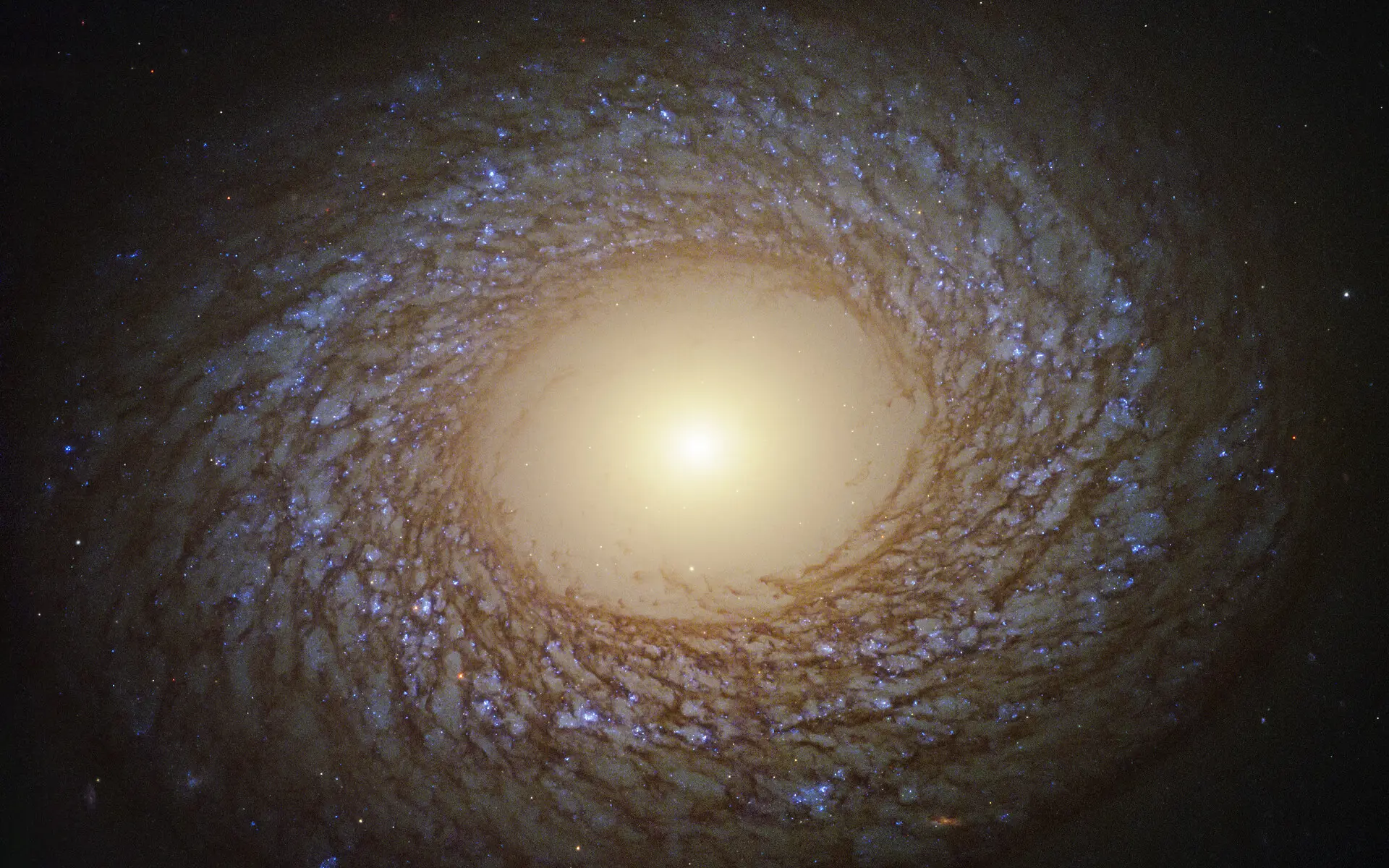
NGC 2275 is classified as a flocculent spiral galaxy, located 67 million light-years away in the constellation of Cancer.
Millions of bright, young, blue stars shine in the complex, feather-like spiral arms, interlaced with dark lanes of dust. Complexes of these hot, blue stars are thought to trigger star formation in nearby gas clouds. The overall feather-like spiral patterns of the arms are then formed by shearing of the gas clouds as the galaxy rotates. The spiral nature of flocculents stands in contrast to the grand design spirals, which have prominent, well defined-spiral arms. Maya is strong; the immediate illusion is that there is a star in the centre of this galaxy. Here, we look to Jnatum, Drashtum, Praveshtum – Knowing, Visualising, Entering.
First, one must learn about the precious truths contained in the sacred texts from veterans in the field. When you learn about them you naturally take an interest in them. Then you develop an urge to visualise those truths at any cost. This is the first stage of Knowing.
In the second stage, you carefully peruse, examine and collect such sacred texts wherever they may be available. You read and directly visualise them. With great perseverance you enquire, comprehend and enjoy them. Thus you derive some satisfaction that you have discerned certain profound truths. This is the second stage of Visualising.
It is not enough if you make progress in the first two stages. You must experience what is known and seen. By entering the arena of experience, one should feel complete identification with the Ideal. If one lies down after having consumed food it will cause indigestion. However, if one consumes daily the requisite quantity of food and undertakes some physical work it will be digested and, converted into blood, will offer nourishment. In the same manner, we should translate into experience and action what we have known and seen, by assimilating it and utilising it for the progress of our country as well as for the welfare of humanity.
It is easy to memorise passages from books and deliver lectures. Knowledge acquired merely through the reading of books is bookish knowledge. This is quite an ordinary type of knowledge. What has been heard, seen and understood should be put into practice at least to some extent. This is the stage of Entering. (Bhagavad Gita 11:54) (Sathya Sai Vahini 21)

Source
Image Source
Image Source
![]()

